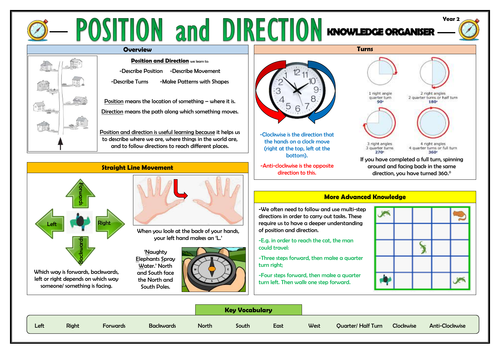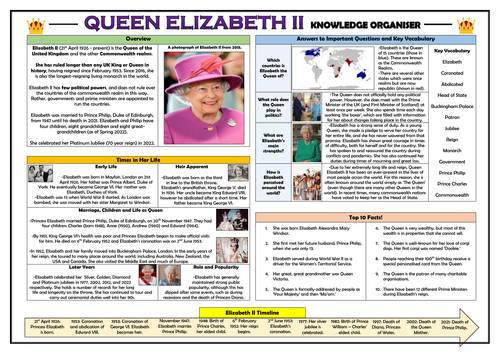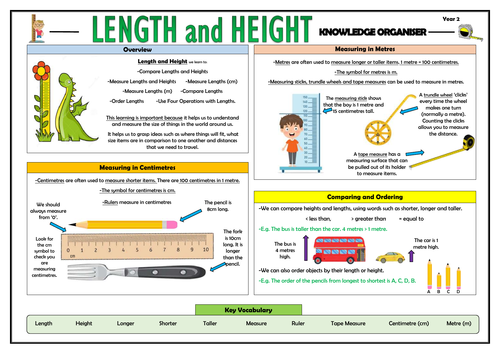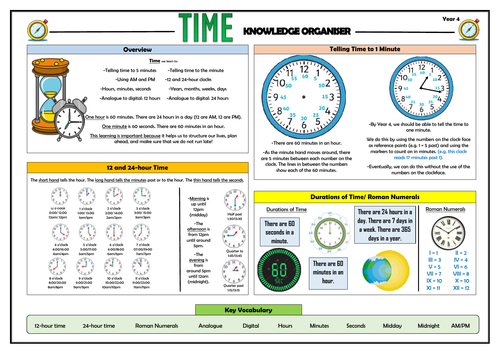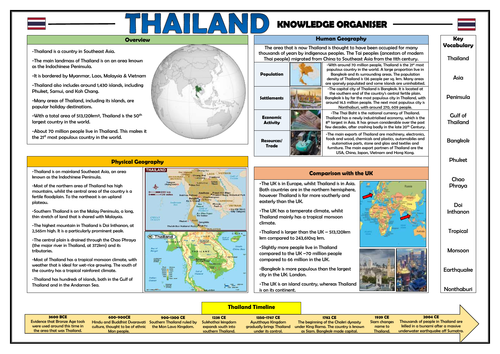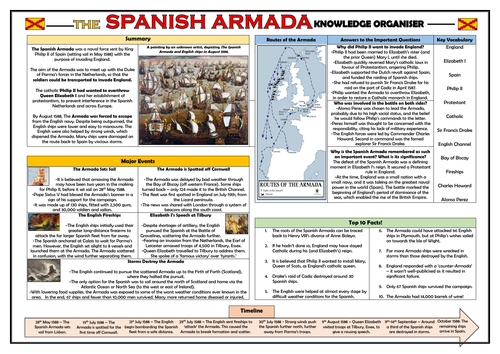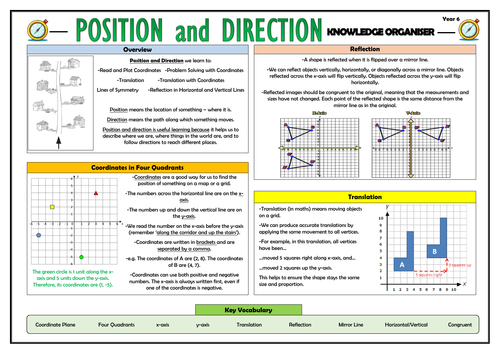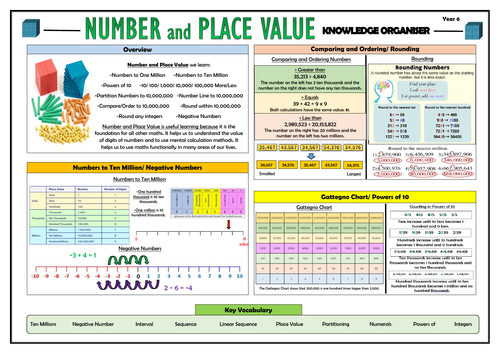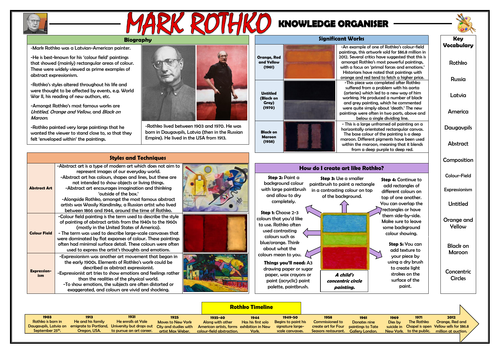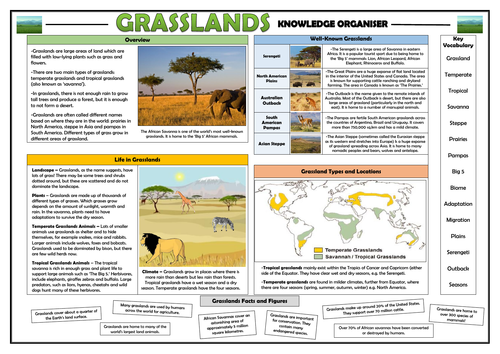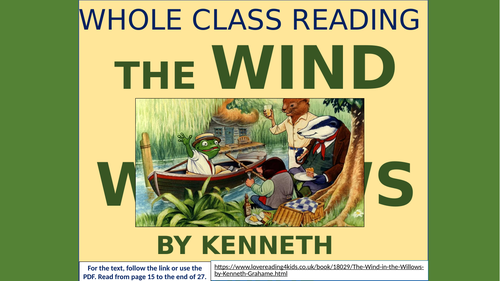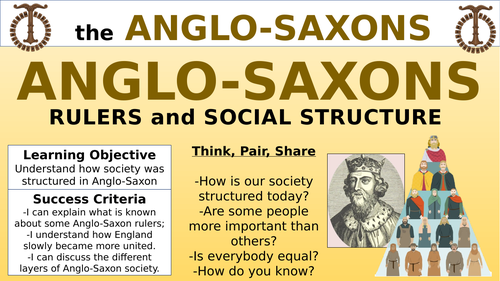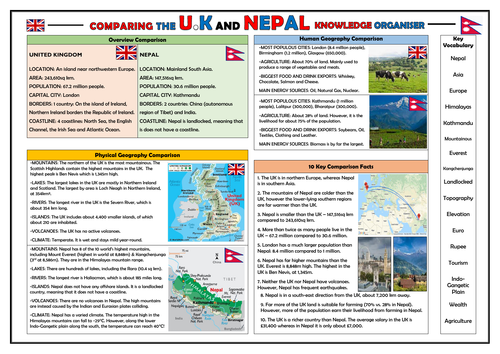
3k+Uploads
1876k+Views
2217k+Downloads
All resources

Y2 Position and Direction - Knowledge Organiser!
This clear, detailed and visually-appealing resource offers a complete reference point for Year 2 teachers, parents and children when covering ‘Position and Direction.’
The content is organised into the following sections:
-Overview: Learning areas covered, key definitions, why this learning is important;
-Straight Line Movement: Forwards, backwards, left, right, north, south, east and west;
-Turns: Clockwise and anticlockwise, half turns, quarter turns, three quarter turns and full turns;
-More Advanced Knowledge: Mutli-step directions;
-Key vocabulary.
The resource is designed to be printed onto either A3 or A4, and is provided as both a PDF and a Word version (so that you can edit if you want to). All images used are licensed for commercial use and are cited on a separate document (included).

Queen Elizabeth II - Knowledge Organiser!
This clear, detailed and visually-appealing resource offers a complete reference point for children learning about Elizabeth II, as a part of their PSHE study of Britain and its values, history study of ‘Significant Individuals’, or cross-curricular learning about monarchs. It is also a useful resource for learning relating to the platinum jubilee. It contains comprehensive sections entitled:
Overview;
Times in Her Life;
Important Vocabulary;
Elizabeth II Timeline;
Answers to the Important Questions;
Top Ten Facts.
The resource is designed to be printed onto A3, and is provided as both a PDF and a Word version (so that you can edit if you want to). All images used are licensed for commercial use.

Y2 Length and Height - Maths Knowledge Organiser!
This clear, detailed and visually-appealing resource offers a complete reference point for Year 2 teachers, parents and children when covering ‘Length and Height’ in mathematics.
The content is organised into the following sections:
-Overview: Learning areas covered, key definitions, why this learning is important;
-Measuring in Centimetres;
-Measuring in Metres;
-Comparing and Ordering;
-Key vocabulary.
The resource is designed to be printed onto either A3 or A4, and is provided as both a PDF and a Word version (so that you can edit if you want to). All images used are licensed for commercial use and are cited on a separate document (included).

Y4 Time - Maths Knowledge Organiser!
This clear, detailed and visually-appealing resource offers a complete reference point for Year 4 teachers, parents and children when covering ‘Time’ in mathematics.
The content is organised into the following sections:
-Overview: Learning areas covered, key definitions, why this learning is important;
-12 and 24 Hour Time: Reading time in AM/PM, digital/analogue, 12 and 24 Hours Clocks
-Telling Time to 1 Minute: 1 minute periods around the clock, understanding when to use ‘past’ and ‘to’, using 5 minutes as reference points;
-Durations of Time: Seconds, minutes, hours, days, weeks, years.
-Roman Numerals;
-Key vocabulary.
The resource is designed to be printed onto either A3 or A4, and is provided as both a PDF and a Word version (so that you can edit if you want to). All images used are licensed for commercial use and are cited on a separate document (included).

George's Marvellous Medicine - Whole Class Reading Session!
This whole class reading session aims to develop children’s comprehension of the opening chapter of Roald Dahl’s George’s Marvellous Medicine.
It contains a link to the online chapter (on the first slide). This is followed by a series of activities aiming to develop children’s retrieval, explanation, inference, prediction and summarising skills. It also contains a vocabulary check immediately after the extract is read to clarify any unfamiliar/ difficult language.
The tasks are comprised of quick-check questions, solo thinking, pair/ group discussions and deeper thinking activities.
The session is best suited for children in years 2-3, although with minor adaptations it could feasibly be used with slightly younger and older year groups.

Writing Recounts - KS1 Knowledge Organiser!
This clear, detailed and visually-appealing resource offers a complete reference point for year 1/2 children when writing recounts. The organiser is also perfect for teachers, parents and English subject leaders - aiding their planning and supporting of children’s knowledge development for this writing text type.
The organiser has a particular focus on the content, language and structural features required to write effective mystery stories at KS1. It contains distinct sections covering:
-Recounts Overview;
-Content: Settings, Characters, and Plot;
-Language: Descriptive Devices, Dialogue, Conjunctions, Punctuation Checklist and Word Mat;
-Structure - Titles, Planning Techniques and other tips;
-Key Vocabulary
The content is fully aligned with the age-related expectations for KS1 children in writing. The resource is designed to be printed onto A3, and is provided as both a PDF and a Word version (so that you can edit if you want to).

The Small Things - Lisa Thompson - Whole Class Reading Session!
This whole class reading session aims to develop children’s comprehension skills through a reading of the opening chapter of Lisa Thompson’s ‘The Small Things.’
The resource pack includes the extract and all of the activities for the session, which the class are guided through via a comprehensive PowerPoint presentation. The reading is followed by a series of activities aiming to develop children’s retrieval, explanation, inference, prediction and summarising skills. It also contains a vocabulary check immediately after the extract is read to clarify any unfamiliar/ difficult language.
The tasks are comprised of quick-check questions, solo thinking, pair/ group discussions and deeper thinking activities.
The session is best suited for children in lower KS2. I originally used this with Year 3-4 children, although with minor adaptations it could feasibly be used with slightly younger and older year groups. The session is also suitable for home/ remote learning.

Thailand Knowledge Organiser - Geography Place Knowledge!
This clear, detailed and visually-appealing resource offers a complete reference point for students revising knowledge relating to Thailand, as a part of their study of place, human and physical geography.
Overview and Maps;
Physical Geography;
Human Geography;
Comparison with the United Kingdom;
Thailand Timeline;
Key Vocabulary.
The resource is designed to be printed onto A3, and is provided as both a PDF and a Word version (so that you can edit if you want to). All images used are licensed for commercial use and are cited on a separate document (included).

The Spanish Armada Knowledge Organiser/ Revision Mat!
This detailed and visually-appealing resource offers a complete reference point for students learning or revising knowledge of The Spanish Armada. It contains comprehensive sections on:
Overview and map;
Events - dates, images, descriptions, and key facts;
Timeline of Major Events
Answers to the Key Questions;
Key Vocabulary;
Top Ten Spanish Armada Facts.
Key words and ideas are underlined for easy reference. The resource is designed to be printed onto A3, and is provided as both a PDF and a Word version (so that you can edit if you want to). All images used are licensed for commercial use and are cited on a separate document (included).

Writing Recounts - Lesson 4 - Creating Cohesion!
This engaging and purposeful lesson is the fourth in a series of lessons that enable children to gradually build towards composing an effective, well-structured recount. This lesson focuses on helping children to create cohesion in their writing. Whilst this series guides children towards writing a recount about an imaginary safari, the resources could be reasonably adapted to suit your own chosen topic.
The eye-catching and comprehensive PowerPoint presentation (19 slides) guides teachers and children along the following learning journey:
-Knowledge recall - revisiting what children already know about recounts;
-SPAG starter: Time connectives;
-Understanding other features that contribute to cohesion in written texts;
-Identifying good and bad examples of cohesion in texts;
-Following a model example to develop cohesion within the remainder of their written compositions;
-Reflecting on their learning from across the lesson.
These lessons were originally created for children in lower Key Stage 2 (Years 3 and 4).

Y6 Position and Direction - Maths Knowledge Organiser!
This clear, detailed and visually-appealing resource offers a complete reference point for Year 6 teachers, parents and children when covering ‘Position and Direction’ in mathematics.
The content is organised into the following sections:
-Overview: Learning areas covered, key definitions, why this learning is important;
-Coordinates in Four Quadrants
-Translation;
-Reflection;
-Key Vocabulary.
The resource is designed to be printed onto either A3 or A4, and is provided as both a PDF and a Word version (so that you can edit if you want to). All images used are licensed for commercial use.

Y6 Place Value - Maths Knowledge Organiser!
This clear, detailed and visually-appealing resource offers a complete reference point for Year 6 teachers, parents and children when covering ‘Place Value’ in mathematics.
The content is organised into the following sections:
-Overview: Learning areas covered, key definitions, why this learning is important;
-Numbers to Ten Million;
-Negative Numbers;
-Comparing and Ordering;
-Counting in Powers of 10/ Gattegno Chart;
-Key Vocabulary.
The resource is designed to be printed onto either A3 or A4, and is provided as both a PDF and a Word version (so that you can edit if you want to). All images used are licensed for commercial use.

Spirit Walker - Michelle Paver - Reading Comprehension Lesson!
This whole class reading session aims to develop children’s comprehension skills through reading and interpreting the opening section of Michelle Paver’s ‘Spirit Walker.’
The resource pack includes the extract needed and a clear and well presented PowerPoint, guiding the teacher and learners through the various activities. The reading is followed by a series of activities aiming to develop children’s retrieval, explanation, inference, sequencing and summarising skills. A vocabulary check helps to secure children’s understanding of any new or unfamiliar language.
The tasks are comprised of quick-check questions, solo thinking, pair/ group discussions and deeper thinking activities.
The session is best suited for children in years 5-6, although with minor adaptations it could feasibly be used with slightly younger and older year groups.

Mark Rothko Knowledge Organiser!
This clear, detailed and visually-appealing resource offers a complete reference point for students learning about the abstract artist Mark Rothko, as a part of their art and design study.
It contains comprehensive sections on:
-Biography of the Artist;
-Styles and Techniques;
-Rothko Timeline;
-Significant Works;
-Key Vocabulary;
-How do I create art like Rothko?
This resource can be adapted for all ages, but was originally designed for KS3/upper KS2 children.
The resource is designed to be printed onto A3, and is provided as both a PDF and a Word version (so that you can edit if you want to). All images used are licensed for commercial use.

Grasslands Knowledge Organiser!
This clear, detailed and visually-appealing resource offers a complete reference point for students revising knowledge relating to temperate and tropical grasslands, as a part of their study of physical geography. It contains comprehensive sections on:
Overview;
Life in Grasslands;
Notable Examples of Grasslands;
Types and Locations of Grasslands;
Important Facts and Figures;
Key Vocabulary.
The organiser is designed to help children to learn the relevant physical geography knowledge from areas of both the KS2 and KS3 Geography National Curriculum, however it can be adapted for other age groups if necessary.
The resource is designed to be printed onto A3 or A4, and is provided as both a PDF and a Word version (so that you can edit if you want to). All images used are licensed for commercial use and are cited on a separate document (included).

The Wind in the Willows - Whole Class Reading Session!
This whole class reading session aims to develop children’s fluency and comprehension skills through reading the opening to Kenneth Graeme’s ‘The Wind in the Willows.’
The reading is followed by a series of activities aiming to develop children’s VIPERS skills: vocabulary, inference, prediction, explanation, retrieval, sequencing and summarising. It also contains a vocabulary check immediately after the extract is read to clarify any unfamiliar/ difficult language.
The tasks are comprised of quick-check questions, solo thinking, pair/ group discussions and deeper thinking activities. The extract needed is provided as a PDF and a link to a web-based version is also included on the first slide.
The session is best suited for children in years 5-6, although with minor adaptations it could feasibly be used with slightly younger and older age groups.

Anglo-Saxon Rulers and Social Structure - Double Lesson!
In this engaging lesson, children are provided with an understanding of Anglo-Saxons rulers and social structure, through learning about:
how the different kingdoms of the Anglo-Saxons gradually unified;
three Anglo-Saxon rulers: Egbert, Alfred the Great and Athelstan;
the social hierarchy that governed Anglo-Saxon life.
The learning is guided by a clear and colourful PowerPoint presentation, which guides students through the following step-by-step journey:
-Knowledge recall - gauging what children already know about the Anglo-Saxon era (answers are provided);
-Understanding that Britain was split into Kingdoms under the Anglo-Saxons, and that these gradually unified over time to create England;
-Researching and learning about the three Kings - Egbert, Alfred the Great and Athelstan - who were each important in this transition towards unification;
-Learning about the social structure of Anglo-Saxon life under the King, and considering how life differed at each level of the hierarchy;
-Reflecting on what life was like for different people within Anglo-Saxon society;
-Comparing Anglo-Saxon society with the societal structure of modern Britain;
-Self-reflecting on the extent to which they feel they have met the learning objective.
Included is the comprehensive PowerPoint presentation (22 slides), and the worksheet for the researching activity.
In the past, I have used this lesson with children in upper KS2 (years 5 and 6) - the key learning is aligned with curriculum expectations for history. All images are licensed for commercial use.

Self-Portraits - KS1 Knowledge Organiser!
This clear, detailed and visually-appealing resource offers a complete reference point for students learning about self-portraits as a part of their art and design study.
It contains comprehensive sections on:
-Overview;
-Styles and Techniques;
-Significant Places/ Artists (e.g. Picasso, Kahlo);
-Creative Ideas and Examples;
-Key Vocabulary;
-Timeline of Self-Portraits.
This resource can be adapted for all ages, but was originally designed for KS1 children.
The resource is designed to be printed onto A3, and is provided as both a PDF and a Word version (so that you can edit if you want to). All images used are licensed for commercial use and are cited on a separate document (included).

Comparison of the UK and Nepal - Geography Knowledge Organiser!
This clear, detailed and visually-appealing resource offers a complete reference point for students revising knowledge relating to the UK and Nepal, as a part of their study of their KS2 place, human and physical geography. It contains comprehensive sections on:
Key Facts Overview and Maps;
Physical Geography Comparison;
Human Geography Comparison;
10 Key Comparison Facts;
Key Vocabulary.
The organiser is designed to help children to learn the relevant place, human and physical geography knowledge from the KS2 Geography National Curriculum:
-understand geographical similarities and differences through the study of human and physical geography of a region of the United Kingdom and a region in a another country.
-physical geography, including: climate zones, rivers, mountains, volcanoes and earthquakes
-human geography, including: types of settlement and land use, economic activity including trade links, and the distribution of natural resources including energy.
The resource is designed to be printed onto A3, and is provided as both a PDF and a Word version (so that you can edit if you want to). All images used are licensed for commercial use and are cited on a separate document (included).

The Diary of a Killer Cat - Whole Class Reading Session!
This whole class reading session aims to develop children’s fluency and comprehension skills through reading the opening to Anne Fine’s ‘The Diary of a Killer Cat.’
The reading is followed by a series of activities aiming to develop children’s retrieval, explanation, inference, prediction and summarising skills. It also contains a vocabulary check immediately after the extract is read to clarify any unfamiliar/ difficult language.
The tasks are comprised of quick-check questions, solo thinking, pair/ group discussions and deeper thinking activities. The extract needed is provided as a PDF.
The session is best suited for children in years 2-3, although with minor adaptations it could feasibly be used with slightly younger and older year groups.

